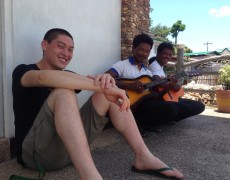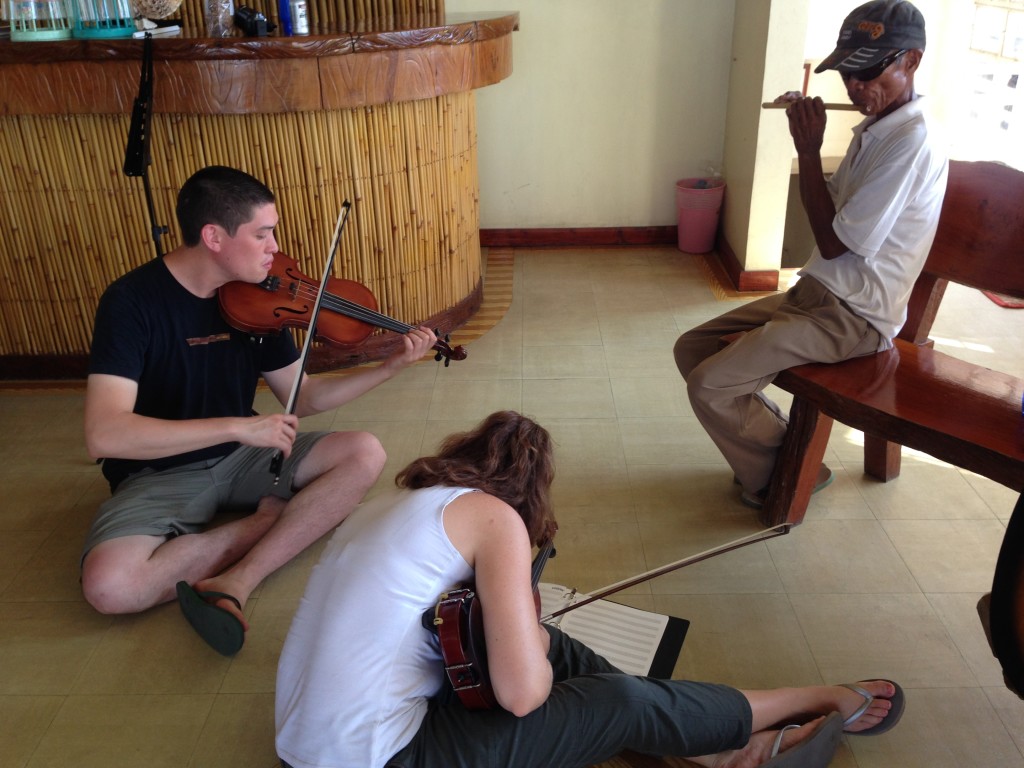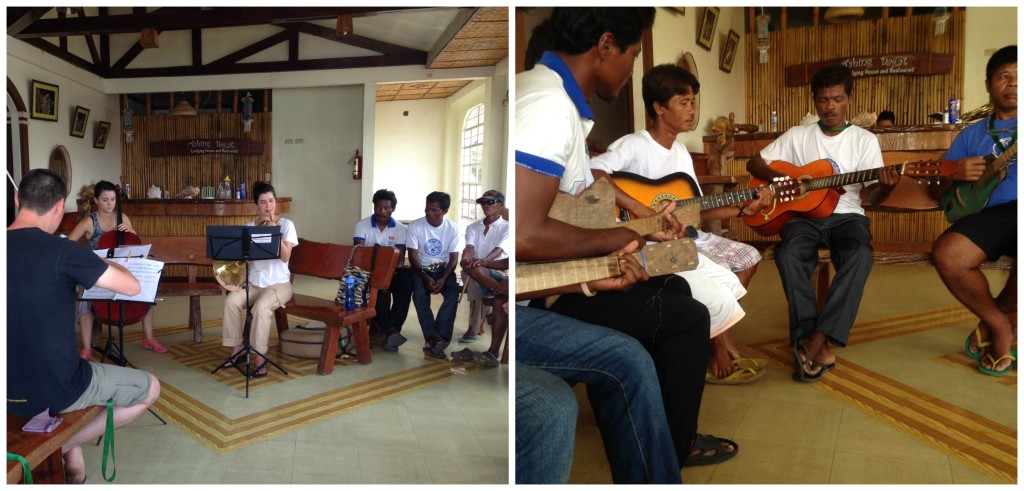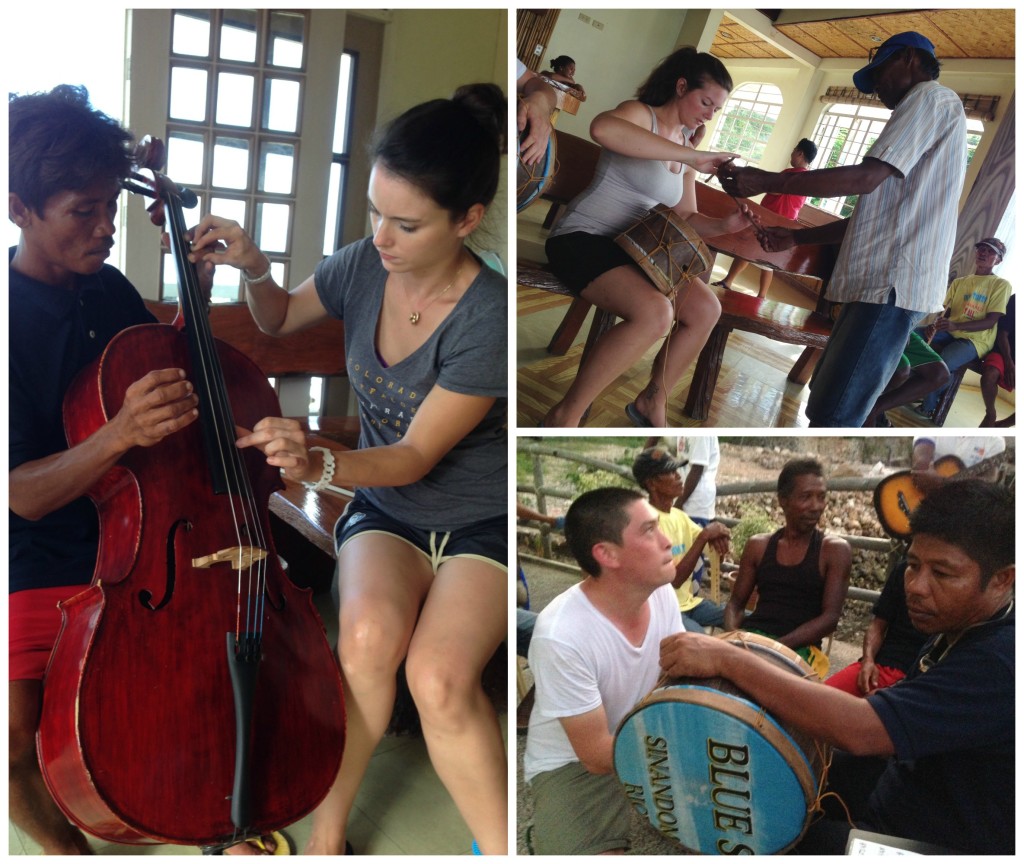Learning Exchange Workshops between Tagbanua and Cultures in Harmony musicians

In commemorating Indigenous Peoples’ Month, we remember the ways we all have come together and shared cultures, celebrating common humanity. Discover now how indigenous Tagbanua and Americans overcame cultural differences and deepened appreciation for each other with a language they knew all could understand – MUSIC.
In August 13-15, 2014, eight Tagbanua men from different areas in the Northern Calamianes Islands of Palawan interacted and worked with four musicians of Cultures in Harmony, a non-profit organization working to build unity around the world through music since 2005. Staying under one roof in Culion main town, these music-makers delighted in learning about each other’s life ways through their songs while at the same time deepening appreciation for their own.
Workshops began with each of the groups performing for the others. The Tagbanua sang their tablay with lyrics in their native Tinagbanua dialect, while CiH musicians played “Ashokan Farewell,” a traditional American folk song. A round of introductions involved each participant telling about his or her musical instrument – how it is played, what it is made of, what its relevance is to their own cultures. In the spirit of openness to learning, they tried each other’s musical instruments too; the Tagbanua enjoyed the opportunity to examine and experiment a little on the Western violin, viola, cello and French horn while CiH musicians did the same to the indigenous drum, tambol, flauta, and yuke.
Succeeding sessions were of story-telling, to be able to look into some of the everyday life ways of the other. The Tagbanua highlighted the sacredness of their music as a gift passed on from their ancestors, to whom they continue to give much honor and respect even after death. CiH American musicians shared that they have given value to tradition too, though not necessarily from people of their own bloodline, but from “musical ancestors” of centuries past. All participants agreed that music is an essential part of life, present in joy and sadness, in coming together and farewell.
The latter part of the workshop included sessions on learning each other’s songs. The CiH musicians put to paper the Tagbanua “Paalam” as a piece for them to play together. The process of listening and translating the music to notes to be read and shared with other musicians was also explained.
Ultimately, music had been both empowering and inspiring in the exchange workshops with CiH. As they shared cultures through stories and songs, the Tagbanua have recommitted to keeping alive the spirit uniquely their own as an indigenous people. All this while having fun and making new friends along the way.

Violinist Rebecca Schlappich (center) and violist Frank Shaw (left) listen and note down the melody of “Paalam” as played by Tagbanua flutist Diosdado Abella (right)


